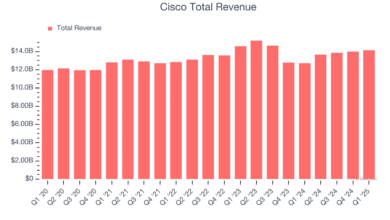Mortgage Demand Rises Despite Increasing Interest Rates

Mortgage demand is demonstrating a resilient upward trend among homebuyers, even in the face of rising interest rates. Recently, the average contract interest rate for a 30-year fixed mortgage has reached 6.86%, a slight increase from 6.84%. This upward momentum in mortgage applications, particularly purchase applications, reflects the encouraging market conditions highlighted by Michael Fratantoni, the chief economist for the MBA. While refinance mortgages have seen a minor decrease of 0.4%, the overall increase in buyer activity suggests that potential homeowners are becoming enticed by a growing inventory of homes available for sale. With uncertainty in the economy, this shift illustrates the adaptability of homebuyers and the overall strength of mortgage demand in the current housing market.
The interest from prospective homebuyers in acquiring home financing solutions is thriving, showcasing the resilience of the real estate sector amidst shifting economic landscapes. This enthusiasm for securing loans for new purchases has been bolstered by a slightly increasing rate environment, yet it remains a crucial moment for individuals considering homeownership. Notably, the demand for mortgage options remains robust, especially for those navigating the initial stages of home buying, including first-time buyers benefiting from government-backed assistance. Furthermore, while there’s been a softening in refinance loan applications, the overall interest in mortgage solutions signifies a vibrant marketplace. As housing supply increases, potential buyers are seizing the opportunity to make advantageous purchases, driving the mortgage landscape forward.
Understanding Mortgage Demand Trends
Mortgage demand is a crucial indicator of the health of the housing market and reflects the interest of homebuyers in seeking financial assistance for purchasing or refinancing properties. In recent weeks, mortgage applications have shown signs of recovery despite rising interest rates. This suggests that homebuyers remain optimistic about entering the housing market. Even with an average contract interest rate climbing to 6.86% for 30-year fixed-rate mortgages, the growth in purchase applications indicates a willingness among buyers to invest in homes, likely spurred by favorable market conditions and a broader selection of properties available.
The recovery of mortgage demand can also indicate a shift in consumer sentiment. Michael Fratantoni, the chief economist for the Mortgage Bankers Association (MBA), has pointed out this trend, highlighting a significant upturn in purchase applications, which rose by 2% week-over-week and a striking 18% year-over-year. With mortgage demand on the rise, it becomes evident that potential homebuyers are adjusting to the economic climates and recognizing opportunities within the market. This dynamic not only reflects a resilient attitude from buyers but signals a potential thaw in previous hesitancies spurred by economic fluctuations.
Current State of Mortgage Applications
The total volume of mortgage applications has recently increased by 1.1%, according to the MBA’s seasonally adjusted index, highlighting a welcomed growth trend in homebuying activity. After experiencing a significant decline in April, this increase marks the second consecutive week of improvement, raising hopes for continued upward momentum in mortgage demand. This growth is particularly noteworthy, as it comes during a time when many analysts were bracing for a slowdown due to rising interest rates. Homebuyers are now taking advantage of a more favorable supply of homes, with active listings rising by approximately 14% compared to last year.
Applications specifically aimed at purchasing homes have shown a noteworthy uptick, revealing that buyers are navigating the current interest rate environment with adaptability. Notably, government-backed purchase applications are gaining traction, attracting a demographic of first-time and lower-income homebuyers who greatly benefit from lower down payment options. This trend not only supports an increase in mortgage applications but also aligns with efforts to promote inclusivity and accessibility in homeownership.
Refinance Mortgages: A Changing Landscape
Despite the positive trends in mortgage applications for purchasing homes, the refinance mortgage sector is experiencing a decline. Recent data indicates that refinance applications decreased by 0.4% from the previous week. While this may seem concerning, it’s essential to recognize that refinance applications are still 44% higher than the same week last year. This reveals that, although current trends show a week-over-week decline, many homeowners are still capitalizing on favorable refinancing opportunities that were previously available during lower interest rate environments.
The share of refinance mortgage activity has also seen a slight dip, reducing from 37.1% to 36.4% of total mortgage applications. This shift highlights how homebuyers and homeowners are adapting to the changing economic landscape and interest rate fluctuations. As buyers prioritize purchasing homes, both in response to improved housing supply and desirable pricing options, it’s evident that the refinance market is becoming secondary for many, transitioning to a more purchase-focused mentality among consumers.
Impact of Interest Rates on Homebuyers
Interest rates are a significant factor influencing mortgage demand and homebuying behaviors. With the average interest rate for 30-year fixed-rate mortgages currently at 6.86%, many potential buyers are weighing their options carefully. While higher interest rates can deter some homebuyers from making a purchase, recent trends suggest that many are still taking the plunge into the market. Rising home supply and competitive pricing are likely encouraging these decisions, as homebuyers aim to secure properties before rates potentially increase further.
In this context, homebuyers are increasingly evaluating their financial capabilities against the backdrop of fluctuating interest rates. Those who are still eligible for loans may choose to experience the current environment of rising rates as an opportunity rather than a hindrance. The current circumstances could motivate prospective buyers to lock in deals now while considering various loan types—ranging from government programs to conventional loans—thus creating a robust marketplace that prioritizes a diverse range of options and empowering consumer choice.
The Role of Government Programs in Mortgage Applications
Government programs play a pivotal role in increasing mortgage demand, especially among first-time homebuyers and those with lower-income brackets. Recent increases in government purchase applications indicate that many homebuyers are tapping into these resources to make homeownership more attainable. By offering lower down payment options and flexible approval processes, these programs are designed to reach and support those who may feel excluded from the traditional home-buying process due to financial constraints.
The appeal of such government-backed loans cannot be overstated. As mortgage demand from these segments continues to rise, it opens the door for greater inclusivity within the housing market. Homebuyers who might have previously hesitated due to high upfront costs can now find viable paths to homeownership. This allows new demographics to enter the market, thereby stimulating growth not just in mortgage applications, but also contributing positively to overall economic recovery in the housing sector.
Analyzing Home Supply and Its Effect on Mortgage Demand
The burgeoning supply of homes is significantly influencing mortgage demand, with active listings currently up by approximately 14% compared to the same time last year. This increase in available properties is a critical response to the heightened interest among homebuyers, as more options encourage transactions. As potential buyers see more homes that fit their needs and budgets, the likelihood of securing mortgage applications rises, sustaining the ongoing upward trends observed in recent weeks.
Moreover, the uptick in new listings, showing a 5.5% increase, contributes to overall market dynamics that foster more competitive pricing and wider selection. Homebuyers are motivated by the prospect of finding the right home, and when accompanied by effective mortgage options, this leads to a more vibrant and active real estate market. The sustained interest in home purchases also suggests a comprehensive recovery phase for the housing sector, supported by an adequate supply to meet increasing demands.
The Importance of Consumer Confidence in Mortgage Demand
Consumer confidence remains a critical driver of mortgage demand, serving as a barometer for homebuyers’ willingness to enter the housing market. Despite rising interest rates, the recent increase in mortgage applications signals that potential buyers maintain a level of optimism about the economy and their financial situations. This confidence is pivotal, as it influences not only individuals looking to purchase homes but also their readiness to engage in the mortgage process.
When consumers feel secure in their economic circumstances, they are more likely to commit to long-term financial obligations, such as mortgages. As additional market factors, such as job stability and wage growth, align positively, these elements contribute to a more favorable attitude toward purchasing homes and seeking mortgage applications. The fact that mortgage demand is increasing, despite economic uncertainties, points to a resilient market that continues to entice homebuyers.
Future Predictions for Mortgage Demand
Looking forward, experts anticipate that mortgage demand will continue to fluctuate in response to the unpredictable nature of interest rates and the economic landscape. While there may be some volatility in demand due to these external factors, the sustained recent increases in purchase applications suggest that homebuyers are adapting and showing resilience. This adaptability might lead to a more robust housing market, especially if interest rates stabilize or decrease in the future.
Furthermore, as government programs unfold more assistance and incentives for homebuyers, particularly for first-time buyers and those with lower incomes, mortgage demand is expected to remain strong. Such developments will drive future applications and assist in maintaining activity within the housing market. Although challenges persist, the overall outlook for mortgage demand remains cautiously optimistic as homebuyers navigate the complexities of their purchasing journey.
Strategies for Homebuyers in the Current Mortgage Market
In the current mortgage environment, it’s crucial for homebuyers to adopt informed strategies that maximize their chances of obtaining favorable mortgage terms. First and foremost, understanding the nuances of mortgage interest rates is key. Buyers should keep an eye on rate fluctuations and utilize tools like rate locks to secure competitive terms if they anticipate further increases. Joining discussions with financial advisors and mortgage professionals can aid in mapping out a strategy tailored to individual needs.
Moreover, it’s essential for potential homebuyers to assess their financial readiness thoroughly. This includes evaluating credit scores, income stability, and savings to determine how much they can afford in monthly mortgage payments. Additionally, being prepared with necessary documentation for mortgage applications will streamline the process, making homebuying less stressful and more efficient. By arming themselves with knowledge and resources, homebuyers can navigate the current market conditions adeptly.
Frequently Asked Questions
What is the current trend in mortgage demand among homebuyers?
Mortgage demand among homebuyers continues to recover, with purchase applications increasing by 2% week-over-week and 18% year-over-year. This trend indicates a growing interest from potential buyers, encouraged by a rising supply of homes.
How have interest rates affected mortgage applications?
Despite a slight rise in interest rates for 30-year fixed-rate mortgages, with the average rate now at 6.86%, mortgage applications for home purchases have shown resilience, reflecting a robust demand in the market.
Are refinance mortgages still popular among homeowners?
While refinance mortgages saw a slight decline of 0.4% in applications last week, they remain 44% higher compared to the same week last year. This suggests that despite rising interest rates, many homeowners are still looking to refinance.
What factors are driving the increase in mortgage demand?
The increase in mortgage demand is primarily driven by higher active listings, which are up 14% year-over-year, and increased interest from first-time homebuyers in government purchase applications that require lower down payments.
How does the supply of homes impact mortgage demand?
The growing supply of homes has positively impacted mortgage demand, as potential buyers find more options available, thereby fostering an increase in mortgage applications and contributing to the overall recovery in the housing market.
What percentage of mortgage activity is represented by refinance applications?
Currently, refinance applications account for 36.4% of total mortgage activity, slightly down from 37.1% in the previous week, highlighting a shift in focus towards purchase applications as the market adjusts.
What does the rise in purchase applications indicate about homebuyers?
The rise in purchase applications indicates that homebuyers are becoming more confident despite economic uncertainties, suggesting that many are willing to move forward with home purchases even as interest rates fluctuate.
| Key Points |
|---|
| Mortgage demand is recovering despite rising interest rates. |
| Average contract interest rate for 30-year fixed mortgages is 6.86%. |
| Mortgage applications rose by 1.1% compared to the previous week. |
| Applications for home purchases increased by 2% weekly and 18% year-over-year. |
| Active listings are 14% higher than last year, new listings up 5.5%. |
| Refinance applications fell by 0.4% but are still 44% higher than last year. |
| Refinance share of mortgage activity decreased to 36.4% from 37.1%. |
Summary
Mortgage demand is currently on a recovering trajectory, showcasing resilience in the face of rising interest rates. The recent uptick in homebuyer applications, particularly for new home purchases, reflects a growing supply of homes and an improving market sentiment among potential buyers. Despite the fluctuation in refinance applications, which have seen a slight decline, the overall landscape for mortgage demand appears optimistic, with significant year-over-year increases in home purchase applications.



